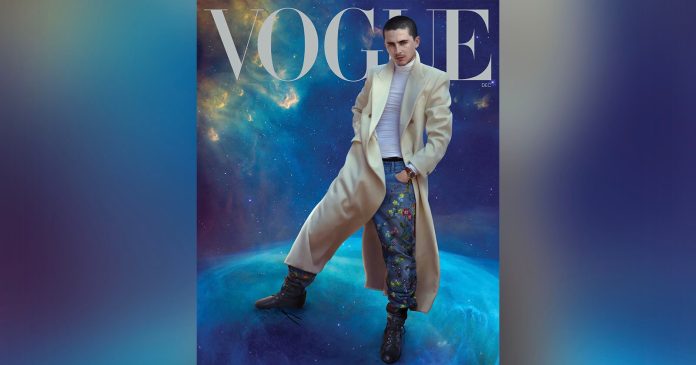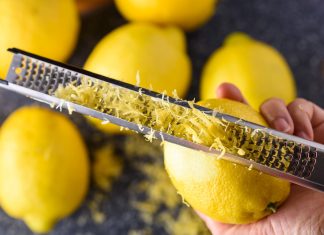
Annie Leibovitz has once again been attracting plenty of criticism this week after her photos of actor Timothée Chalamet graced the pages of Vogue magazine’s December edition. But is any of it justified? PetaPixel writers have their say.
Reaction is Overblown
Jeremy Gray
It’s easy to see why Annie Leibovitz’s latest Vogue photo shoot with Timothée Chalamet is polarizing. The photos are heavily stylized, bold, and unlike what you’ll see just about anywhere else.
Not that Leibovitz needs anyone’s approval or validation, but I do think that the negative reaction, primarily among Chalamet’s fervent supporters, is overblown. I suppose some people just want celebrities to be photographed in the most flattering way possible, but that’s dreadfully boring and ultimately just commercial work, not necessarily art. If Chalamet’s many fans want to see him looking his best, there are plenty of places for them to see portraits like that. What Leibovitz offers people like Chalamet is a chance to be part of the photographic art-making process itself and be more than just a portrait subject.
In Chalamet’s Instagram post, where predominantly negative comments and reactions scroll seemingly endlessly, the actor reflects positively upon the three-day photoshoot at Michael Heizer’s land art sculpture, City, describing Leibovitz via emoji as “the GOAT,” or “greatest of all time.”
Whether that is true or not, that Leibovitz is really the greatest photographer of all time, she undoubtedly does interesting things that most other photographers wouldn’t. Armed with big budgets, a large team of stylists and creative minds, and collaborators like Chalamet, Leibovitz can create visually striking work that, at the very least, moves the cultural needle. Sometimes it even goes beyond that and elevates the art form itself.
Do I like all of Leibovitz’s photos of Chalamet? No, certainly not. But I do love some of them, and that’s something very difficult to achieve when a photographer plays it safe. I’m thrilled that Leibovitz has the resources to roll the dice, even if I’m not always enamored by the results. The photography world would be a much more vibrant place if everyone with a camera and a vision had the same freedom she does.
Master of Her Craft
Jaron Schneider
Based on my last assessment of Leibovitz’s work, I think you would make the assumption I would be just as critical of this set of photos. Quite the opposite, as I think these are downright fantastic from a “what are the goals of these photos?” perspective.
Leibovitz understands the mission. Vogue’s goal is to sell magazines and drive traffic, and what better way for a photographer to do that than to stand out from the masses of magazines all running the same photos on every cover. Annie took Vogue’s mission to heart and is crushing it. When you see a newsstand, I guarantee you’re immediately looking at that weird blue galaxy with Chalamet’s early-90s aesthetic standing on top of it. I think it’s great.
I also think it’s important to talk about this idea that it’s time to let a younger photographer have a shot at a Vogue feature. While I think that’s definitely worthwhile, I also don’t think it’s time for Leibovitz to just hang it up.
Any young photographer who would theoretically be given this assignment would never even dream of doing that back-of-the-head shot that is in this series. That’s what makes Annie great. She’s willing to try, and even highlight, a photo no one else would even dare take. I am sorry, but that’s downright brave.
I’m beginning to respect Annie in the same way I respect and love Picasso. Earlier in both their careers, they mastered their craft. They then spent a large chunk of their lives playing with their art and making something new, different, or arresting.
“It took me four years to paint like Raphael, but a lifetime to paint like a child,” Picasso once said.
Leibovitz is fully embracing this kind of thinking, and I have to admit, I’m looking forward to her next series.
This is Leibovitz’s World, We’re Just Living in It
Matt Growcoot
Once again the losers, lightweights, and lemons come crawling out from their hiding places to criticize the world’s greatest living photographer. It’s starting to feel predictable at this point: Vogue edition drops, Leibovitz’s work is all over it, cue the sound of a thousand trolls hammering on their keyboards.
Vogue must simply love working with Leibovitz and all the buzz that it brings. To borrow a comment from PetaPixel reader Gordon Bunker, who quoted Oscar Wilde on yesterday’s article: “The only thing worse than being talked about is not being talked about.”
Granted, Chalamet’s appearance on the cover of Vogue was always going to set tongues wagging since, A), it is unusual for a man to be the cover star, and B), it’s Timothée Chalamet, arguably the most important movie star in the world who’s upcoming film Marty Supreme has the power to make or break Hollywood’s so far disastrous 2025. Therefore, it is obvious that Vogue would call up its most important, most visionary photographer.
Is the front cover a little kooky? Yes, it absolutely is. But it also communicates just how big a star Chalamet is. As for the photos taken at Michael Heizer’s land art sculpture City in the Nevada desert, I think they are stunning. Leibovitz is smartly playing on what Chalamet, the actor, is best known for: his role in the Dune series.
Despite being well into her eighth decade, Leibovitz is still taking chances, pushing boundaries, nestling herself in people’s consciousness. This is what great artists do. She is not only an inspiration — but a credit to the entire photography industry.







